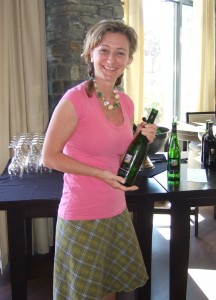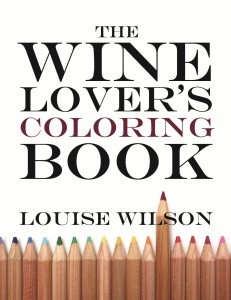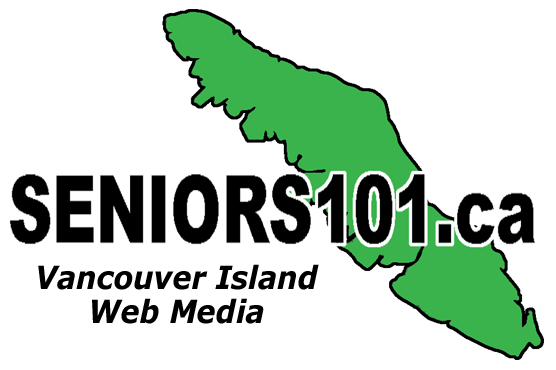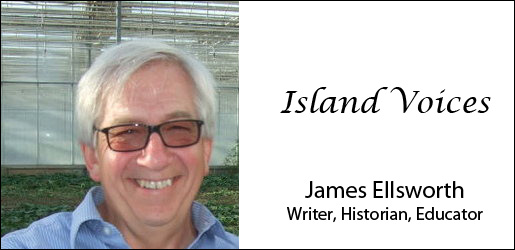Vancouver Island Sommelier Adds Colour(ing) To Wines
Archive ∙ Back to Island Voices
Vancouver Island Sommelier Adds Colour(ing) To Wines
Louise Wilson, a Master of Wine candidate from Victoria and international promoter of Peller Estate Wines, has added new meaning to viniculture colour.
VICTORIA, BC, Dec. 18, 2012/ Bon Voyage/James Ellsworth
A University of Calgary grad, who relocated to Victoria from 2002-2010 and, most recently Niagara-On-The-Lake, has a unique passion for wine and for getting others to appreciate everything oenological. Her most recent offering is The Wine Lover’s Coloring Book. With a natural talent for sharing her knowledge and verve about wines, Wilson adds the colouring book to her already acclaimed teaching role.
Louise Wilson, Wine Aficionada Extraordinaire

An accredited sommelier with The International Sommelier Guild (ISG) and a diploma holder from the Wine and Spirits Education Trust (WSET), Wilson is currently competing to be a Master of Wine. She brings several sommelier and educator skills to this publishing venture. When asked why she chose to publish a colouring book, her response was “I really wanted to make a study guide that would bring things down to the basics, thinking that you can always build from there. Plus I wanted to create something that would be fun and approachable, disarming even (sometimes learning about wine can be kind of intimidating). So once the book was done I thought, yes, it is a good study tool, but I think it also makes a fun gift for the wine lover who has (almost) everything.”[1]
It is a virtual world wine tour actually. After six years from idea to completion, and in about 110 pages (which aren’t numbered), Wilson gives you a geography lesson and more of Old World and New World regions each sharing approximately half the book. Then she highlights in brilliant colour the sub-regions within. You can pinpoint Burgundy in red and Bordeaux in orange among France’s nine areas; Veneto in yellow and Tuscany in orange among Italy’s twenty while the New World gets similar treatment, such as British Columbia’s five; Australia’s seven; and even China’s six. In addition these sub-regions are delineated by their divisions, be it the terroir of Entre-Deux-Mers, France in light blue, or the varietals in Maipo, Chile in red.
Wilson is able to capture succinctly, in no more than two pages on any region, information about the appellation systems, history, the varietals, the climate, and interesting facts such as Melbourne’s Victoria State having the most wineries per capita; or 94% of the wine consumed in China is red perhaps because red is a colour of good fortune or because tannin is familiar to their palate because of tea.
As a teacher, Wilson has a natural talent, blending knowledge with humour and experiential inclusivity. Whether she knew it or not, this book actually uses excellent and credible pedagogical techniques. Good educators realize that learners have different learning styles and that the more “modalities” one uses, the better it is for learning. There is even a multi-sensory approach to reading that believes that using movement (kinesthetic) and touch (tactile) along with hearing (auditory) and visuals help learning best. Perhaps that is why wine tasting too is such a wonderful learning event!
But Wilson’s The Wine Lover’s Coloring Book, perhaps serendipitously, practices what classroom teachers know, that the visual/spatial preference for maps and colour help to retain information and that eighty percent of the brain receives information visually. Color stimulates the visual sense and encourages the retention of information.[2] Perhaps it’s no marketing accident that McDonald’s employs red and yellow!
The Wine Lover’s Coloring Book and Vancouver Island

Vancouver Island and the Gulf Islands wine-producing region is coloured red which is fitting. Although the Okanagan Valley produces 95% of British Columbia’s wine, the cooler climate, sunshine and soil on the islands is favourable for growing reds like Pinot Noir and Maréchal Foch. There are approximately thirty-five wineries, mainly in the Saanich Peninsula and the Cowichan Valley, but also stretching from Sooke to Comox, and Salt Spring Island to Hornby Island.
The wines have quality and many awards to prove it too. For instance, the Saanich Peninsula’s Starling Lane Winery won the gold medal for its 2008 Maréchal Foch and 2009 Pinot Noir at the All Canadian Wine Championships; and Averill Creek’s 2009 Pinot Noir was listed among the top 25 BC Wines by Wine Access magazine (Dec.6, 2012).
There is a world o’ wine out there to discover and Wilson’s book aims to help the reader do just that. As she says in her introduction “I love wine, and I have always loved to colour. The world of wine is a fascinating topic.” Test her theory and raise a glass.
Averill Creek Vineyards in Duncan, BC is at the same latitude as Dijon, France in the Burgundy region. Andy Johnston began planting in 2002 and his winery opened in 2006, where he focuses on Pinot Noir.
John Schreiner, noted Canadian wine writer, listed 14 BC wineries in 1988 and almost 200 of them by 2009.
To date there are 300 Masters of Wine in the World, and only 4 of these are Canadian. See the Institute of Masters of Wine.
[1] Treve Ring, Eat Magazine (April 10, 2012), interview
[2]See Rose Kivi


